I spent the whole morning, and some hours around noon, taking photographs in the tall grass of the lush meadows not far from my hometown.
On these photographs you can see two spiders, two different but similarly shaped species with similar hunting style, that are present in big numbers in this habitat. On the left is the Tibellus oblongus from the philodromidae familly, commonly known as running crab spiders ... and on the right is the Pisaura mirabilis from the pisauridae family, commonly known as nursery web spiders.
On this triptych you can see only the Pisaura mirabilis ... a female ... male spiders of this species have slightly different markings and stronger contrast between the dark and bright lines on their body.
The spider is clearly visible when resting on the blade of fresh grass, in this typical pose, although it can be easily mistaken for some dried out plant part that have fallen on the green leaf ...
... but on the dry leaf ...
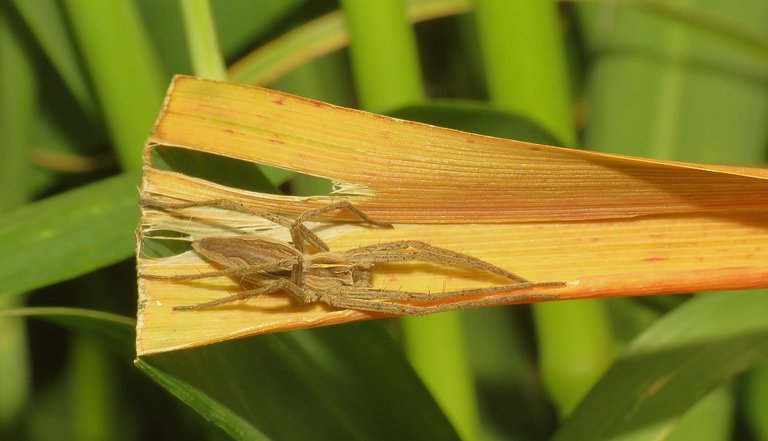
... or like in this case, on the dry top of the generally green leaf ...
... is pretty hard to notice.
I photographed quite a few Pisaura mirabilis spiders today ... and behind one of them ...
... I saw what looked like a twirling spider of the same size, hanging from the leaf of grass. This was actually the empty exoskeleton of the living spider ... the slightest breeze or movement of the grass made the thing twirl and look alive.
Here you can see the Tibellus oblongus male. The legs of the males are very long in relation to the rest of the body.
On the nearby grass ... of the same kind, the wild oat (Avena fatua) ...
... I photographed another long - legged creature, the Tipula oleracea crane fly ...
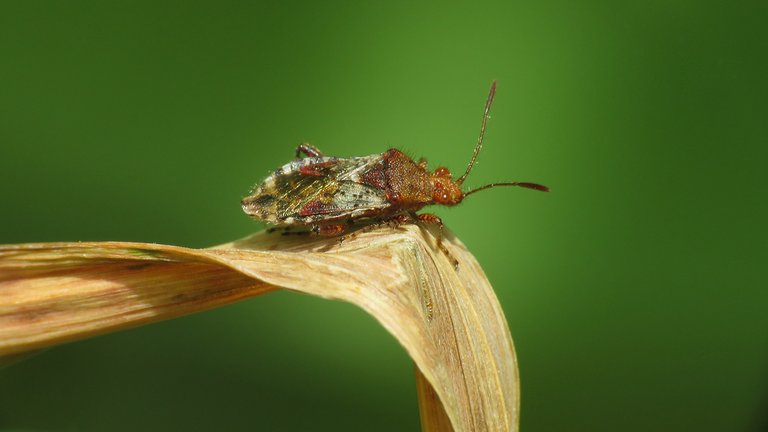
... and this bug, the Rhopalus subrufus.
You can see quite a few different grasses on these meadows.
These are the lovely - looking structures that holds the seeds of the Briza maxima, native to the Mediterranean regions of Europe, Asia and Africa.
Here you can see the fresh inflorescence of the Holcus lanatus, a grass species common throughout the whole Europe.

This is a pretty unusual inflorescence of the Hordeum murinum grass. I don't know how or why the white, kind of ghostly, part was created.
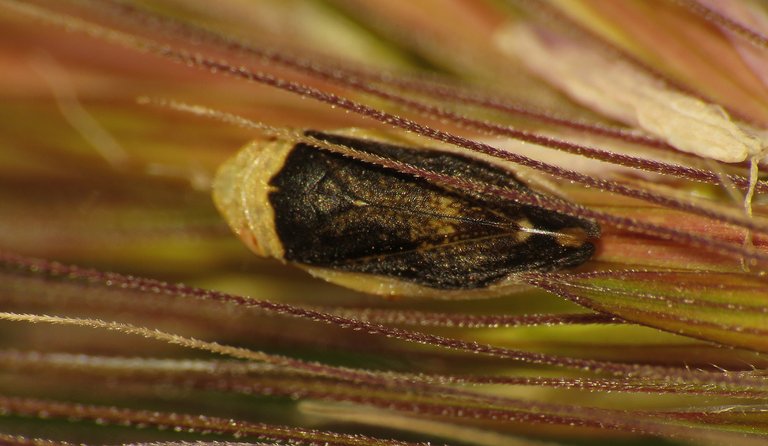
While taking this shot on the same kind of grass, the Hordeum murinum, I was convinced that I'm photographing a seed, or some other plant fragment that was part of the inflorescence or has fallen from some other plant.
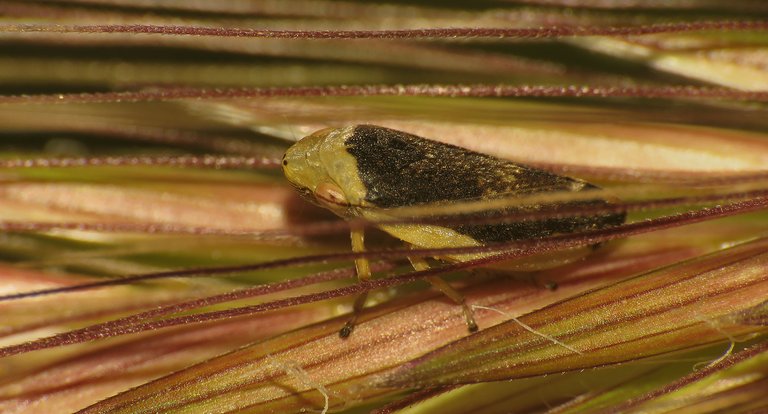
Only when the insect moved I found out that this is a froghopper from the Aphrophoridae family ... the Philaenus spumarius.

This interesting, polymorphic species can look like this ... a variation that I see for the first time in nature ...
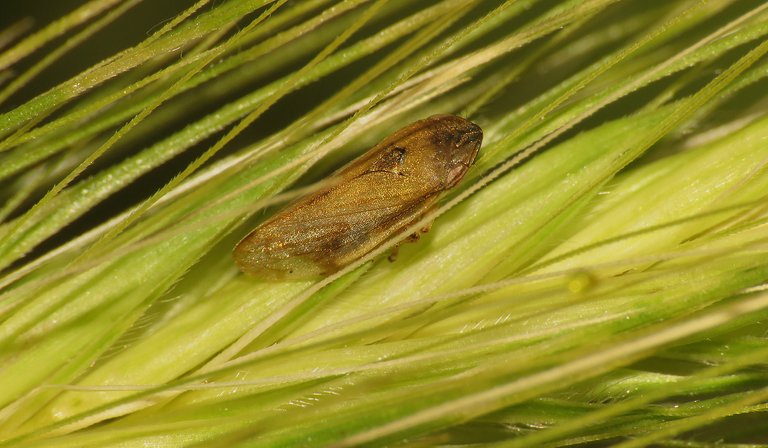
... or like this, a variation that I regularly encounter on these meadows ... or like a few other variations that I didn't photograph today.
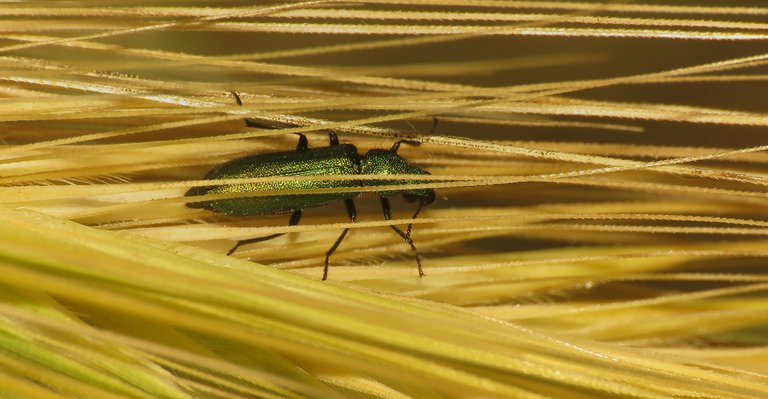
Some small beetles also found shelter here on the Hordeum murinum ... this is the Psilothrix viridicoerulea ... a soft-winged flower beetles (Melyridae family) that feeds on pollen of various flowers ...
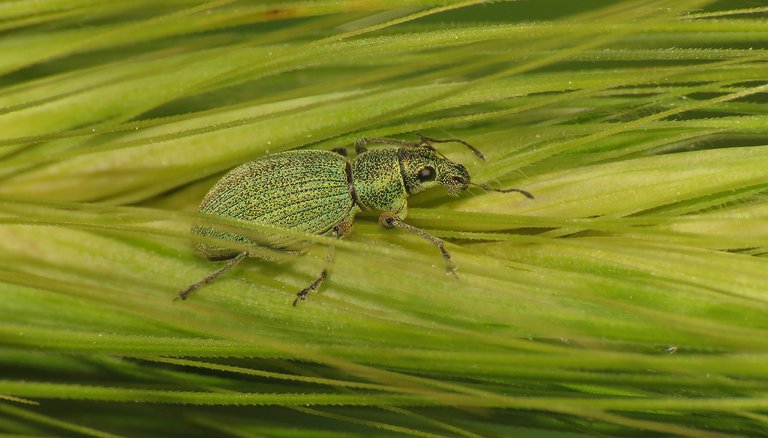
... and here you can see the Phyllobius roboretanus weevil.
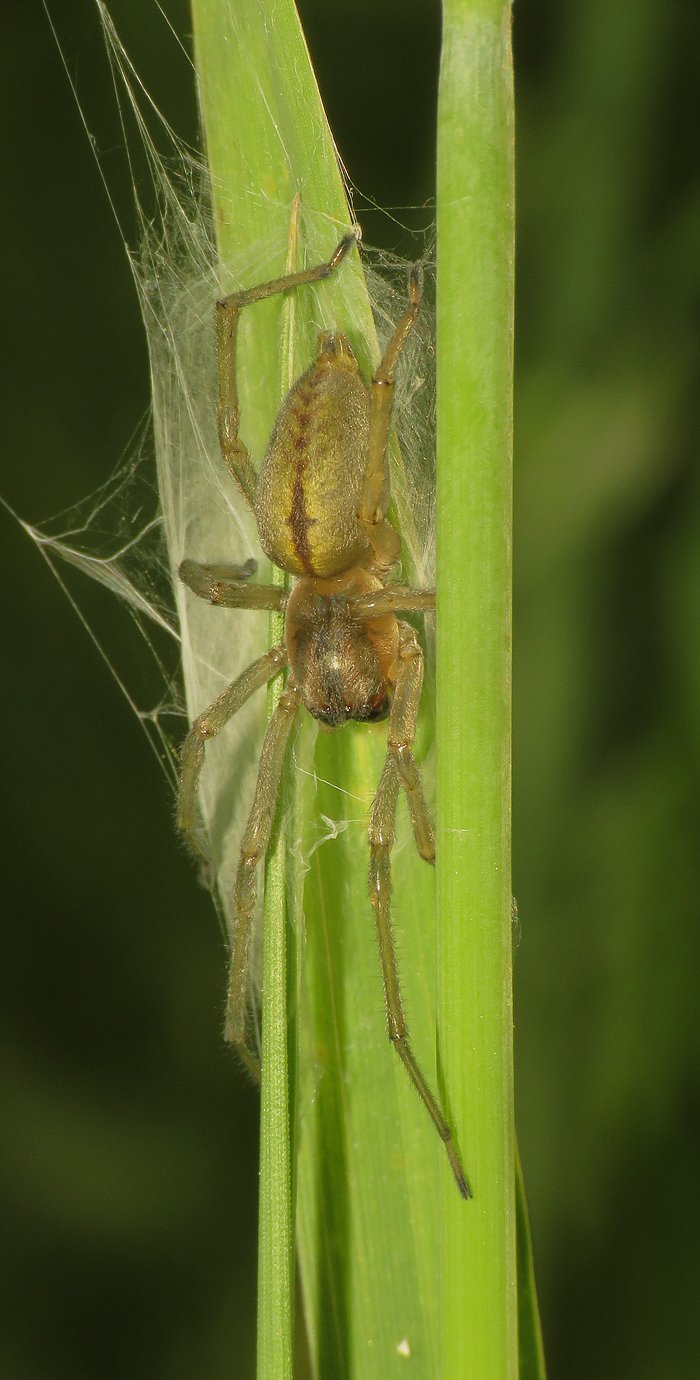
A bit further, in between the stem and leaf of the same kind of grass ...
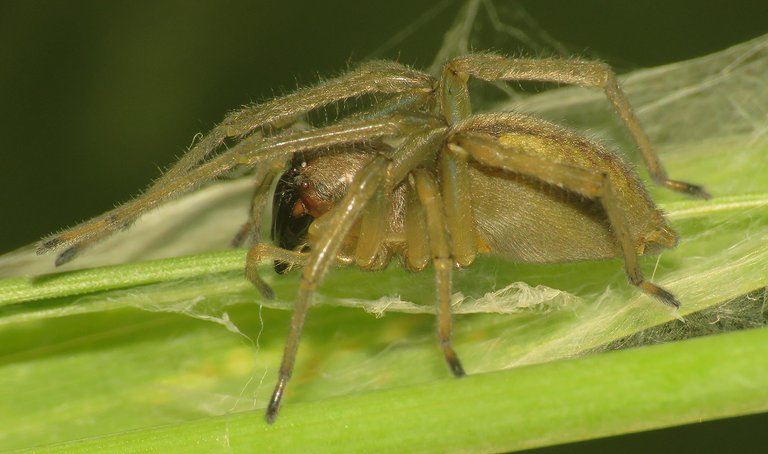
... this spider, the Cheiracanthium erraticum ...

... has built a small silky sack ...
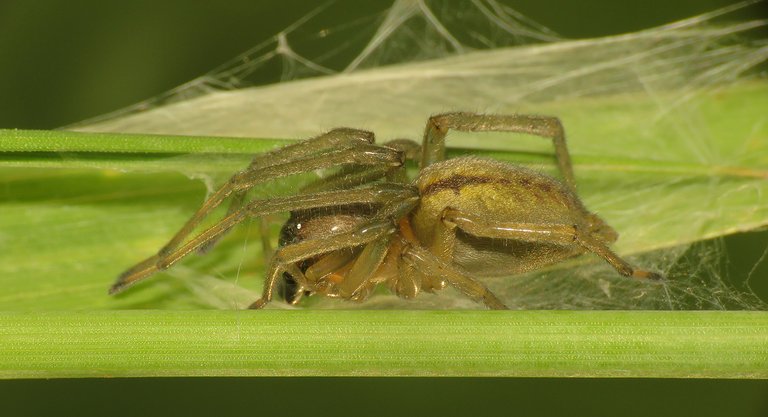
... this species often builds much bigger silky structures.

On one leaf of the Hordeum murinum grass I found these lovely red markings ... maybe some kind of disease ... I don't know ...
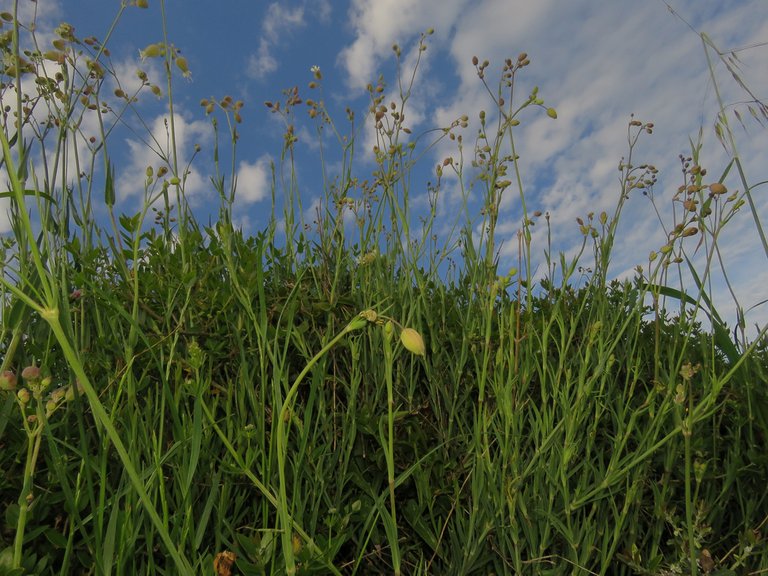
Some meters further I photographed a group of Silene vulgaris plants.
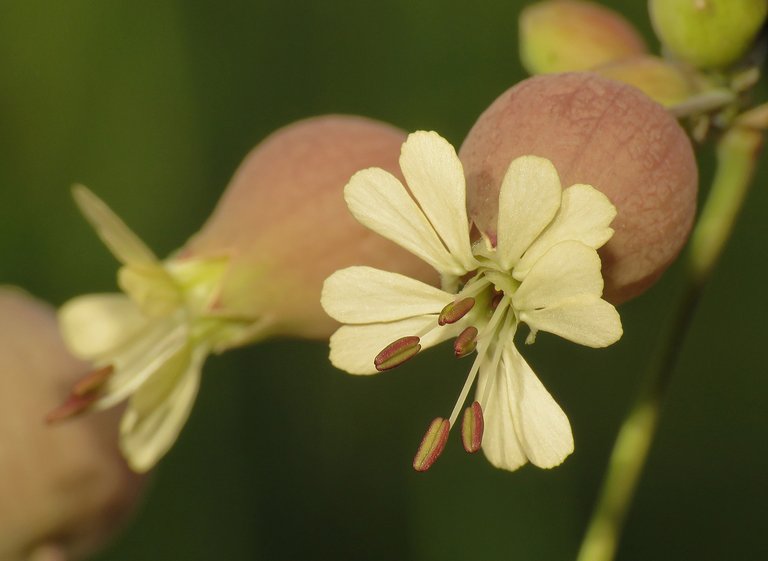
Here you can take a better, more up close look at the interesting, barrel-shaped flowers ...
... in various stages of development. Silene vulgaris is an edible plant, The young shoots and tender leaves can be eaten raw in salads ... the older leaves are usually eaten boiled or fried.
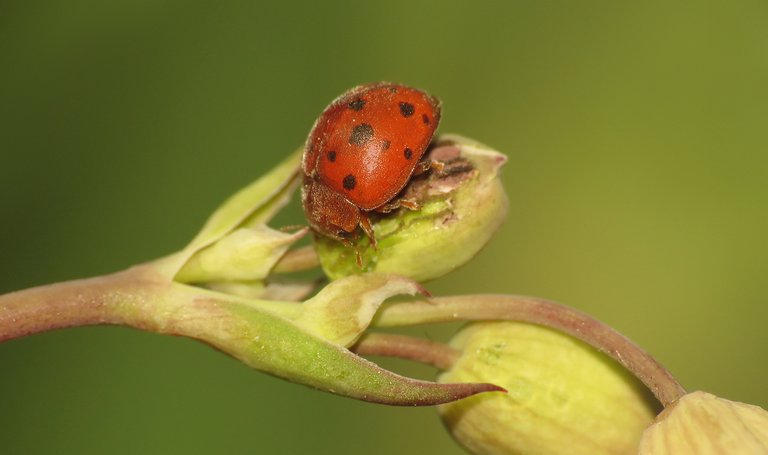
On one of these plants I photographed the Subcoccinella vigintiquattuorpunctata lady beetle. I find this vegetarian species very often on various plants of the Silene genus.
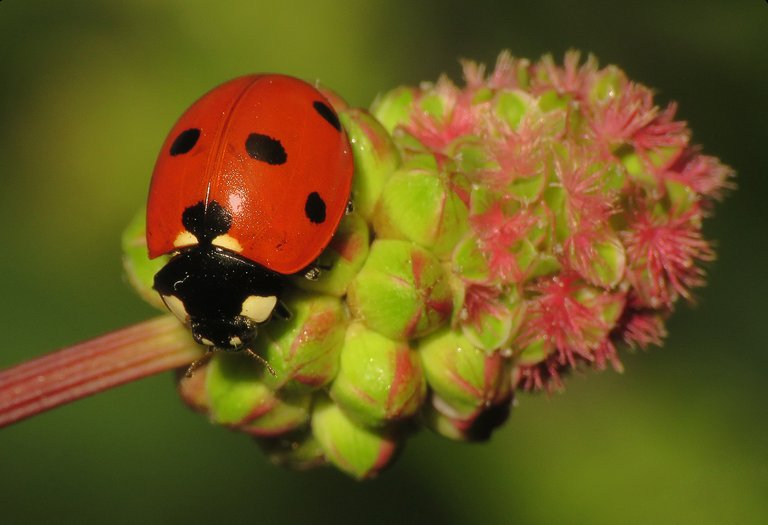
On the flower head of a neighboring plant, the Sanguisorba minor, I photographed the Coccinella septempunctata that feeds mainly on aphids.
Sanguisorba minor it's also an edible plant. Young leaves of this plant have strong and nice aroma. After this shot ...

... I photographed this detail of some plant that I can't identify only through this picture, and this is the only picture I have, so I can't tell you what species is this.
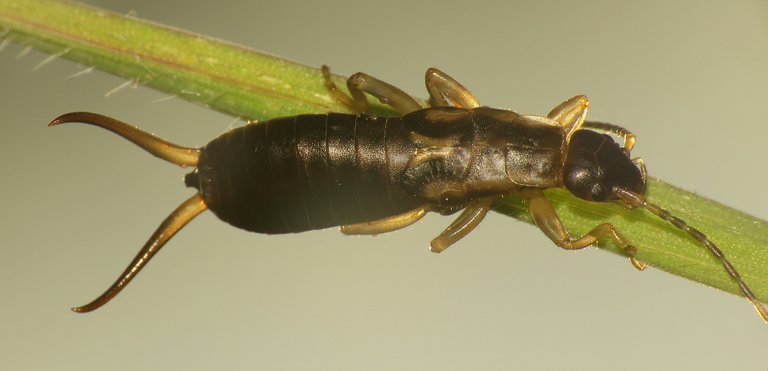
Some minutes later, in the same area ...

... I found the nymph of the Forficula auricularia earwig.
The insect was in a great position to be photographed in the gorgeous morning light.
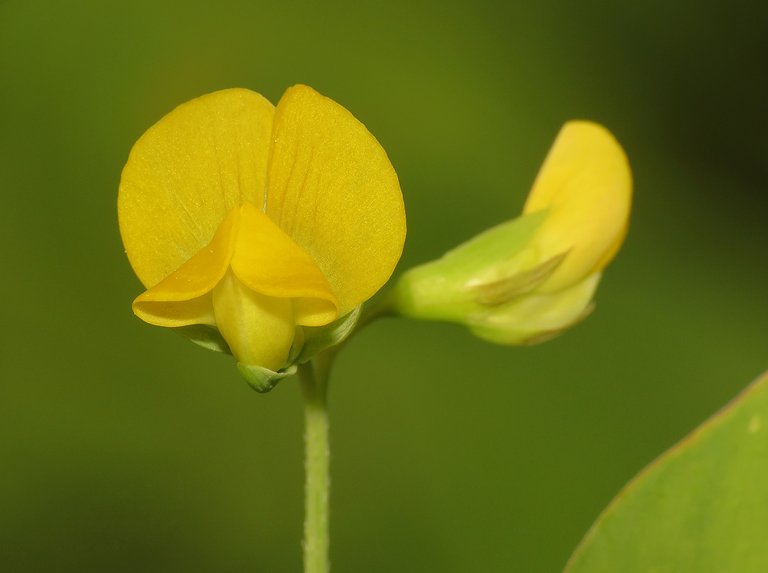
On this ... and the following bunch of photographs ...

... you can see ...
... the lovely yellow flowers of the juicy Lathyrus aphaca plant ...
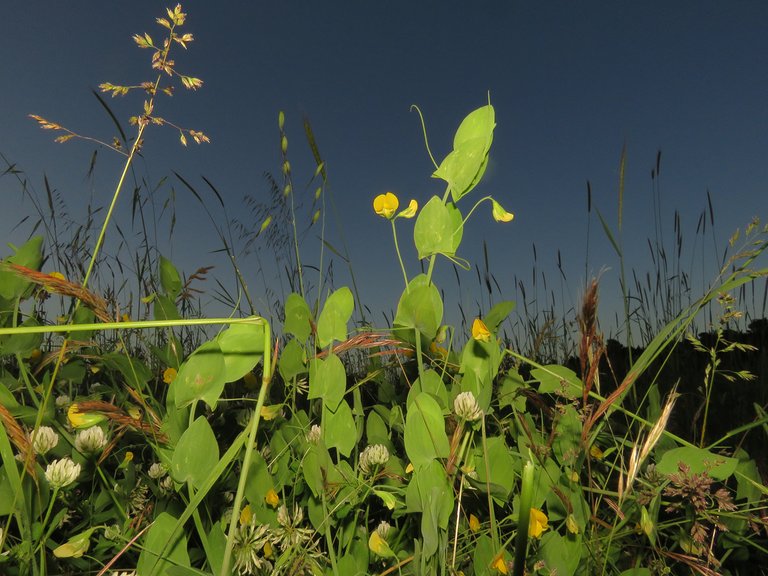
... that in some places creates a dense growth in between tall stems of various grasses.
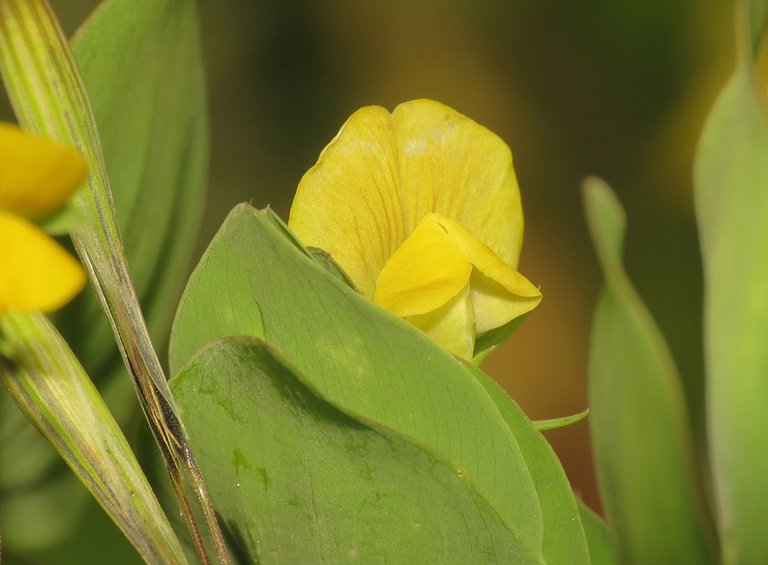
This is just another portrait of a flower ... that looks like it's peeking behind the leaf.
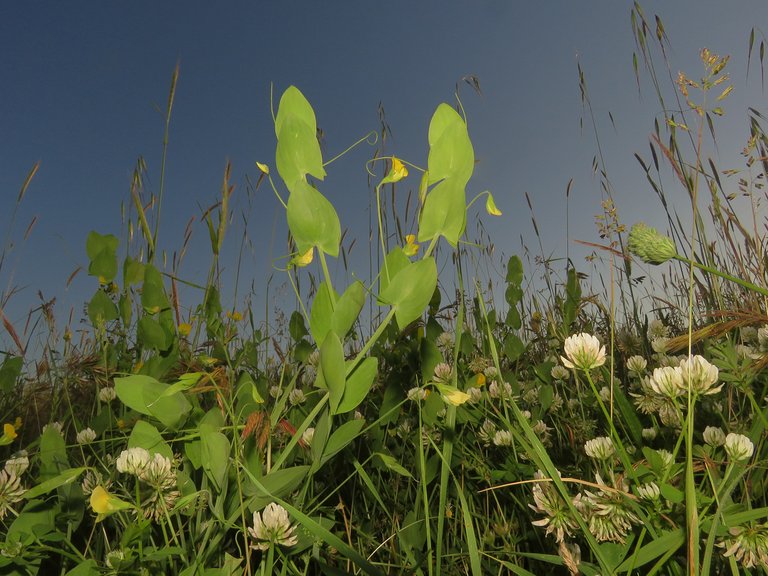
Some meters further, on another growth of Lathyrus aphaca, surrounded by
small white clover Trifolium nigrescens ...
... I found some interesting, pinky - colored larva that was feeding on the yellow flower.
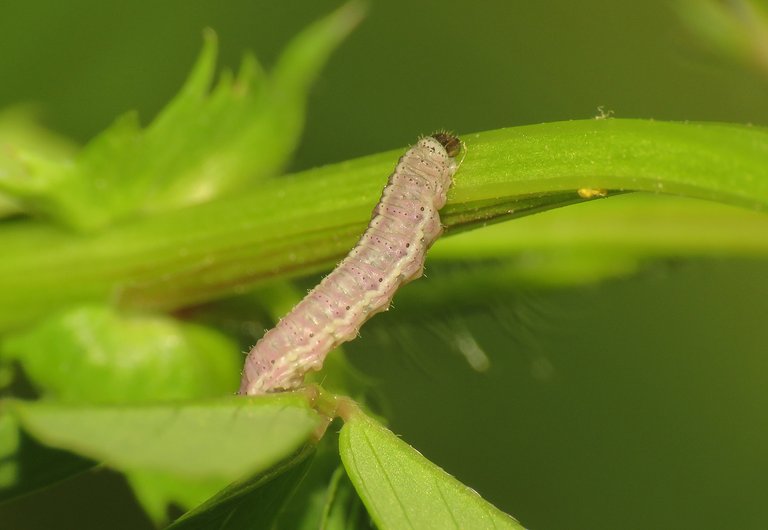
Very near, on the Trifolium nigrescens plant, I found anothe larva of the same kind ... and then ...
... on the Hordeum murinum I found yet another one.
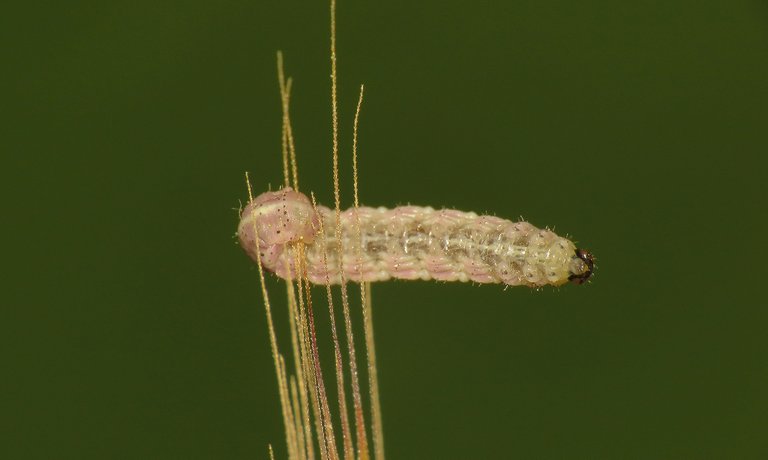
This is the caterpillar of the Cydia nigricana moth ... that attacks also the cultivated pea ... as you can easily deduce by its leaves, flowers and the overall look of the plant, the Lathyrus aphaca is closely related to the cultivated pea.
All parts of this plant, but especially the seeds, contain a toxic amino-acid. It is produced in the plant at about the same time that the seed starts to develop. In small quantities the amino acid is innocuous, and the seeds of several Lathyrus species can be eaten as a nutritious part of the diet. However, in larger quantities (the seed should form more than 30% of a diet to create problems), it can cause a very serious disease of the nervous system known as lathyrism. Symptoms appear as a paralysis of the muscles below the knees, pains in the back, followed by weakness and stiffness of the legs and progressive locomotive incoordination
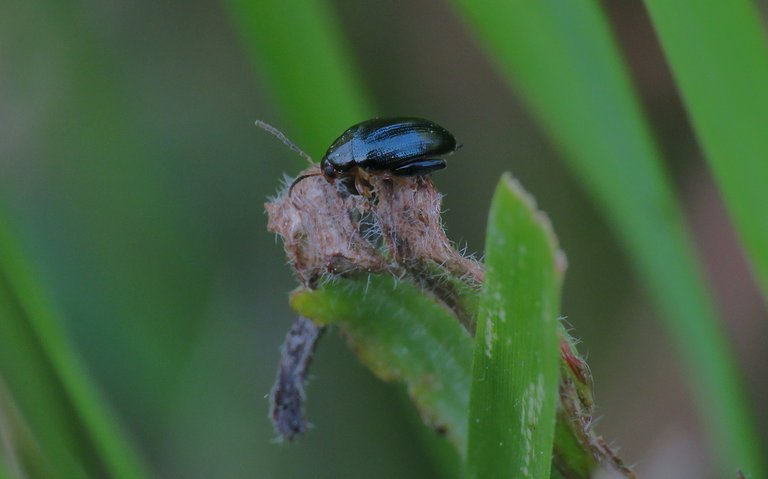
On my way back to the car I photographed this minuscule flea beetle, I don't know the exact species, the genus is probably longitarsus ...
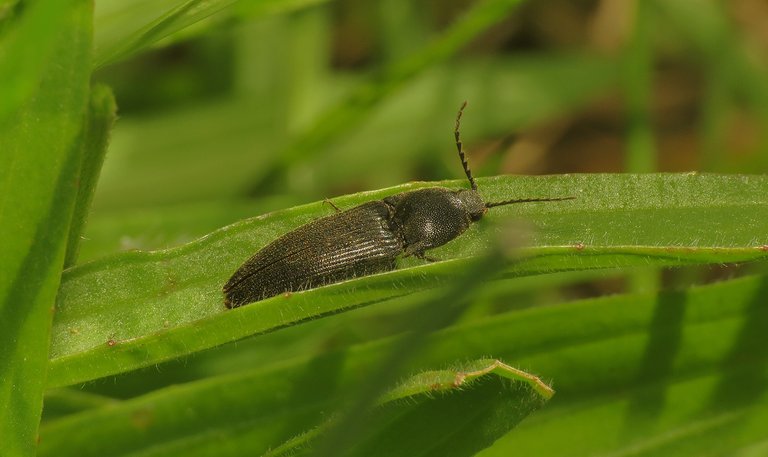
... and after taking this shot of the Ampedus nigrinus click beetle - I was driving home, to eat something and prepare this post.
As always in these posts on HIVE, the photographs are my work ... and as always in this NEWS FROM THE MEADOWS series, they were all taken today.


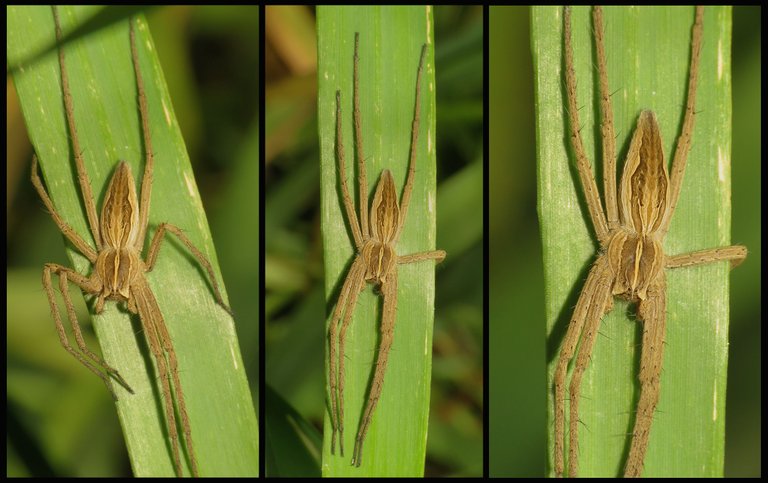

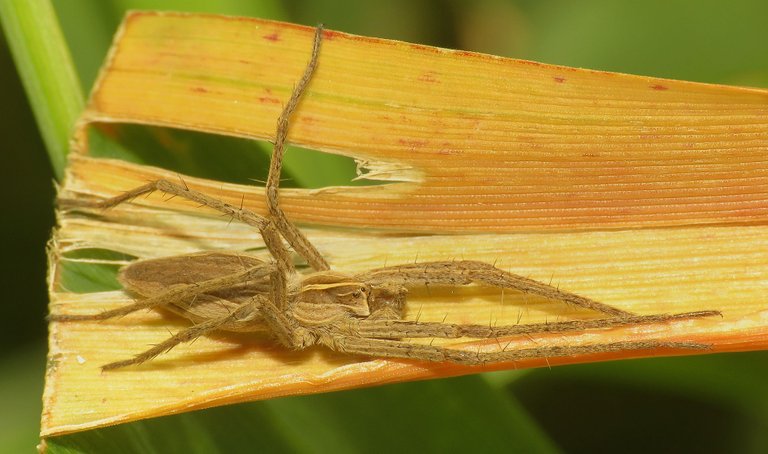


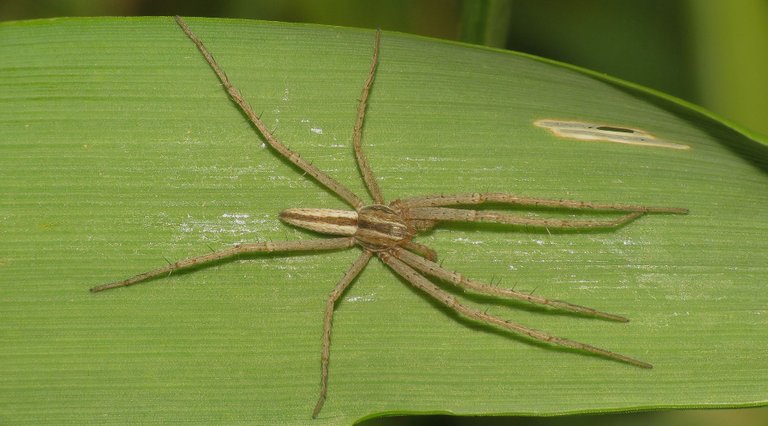
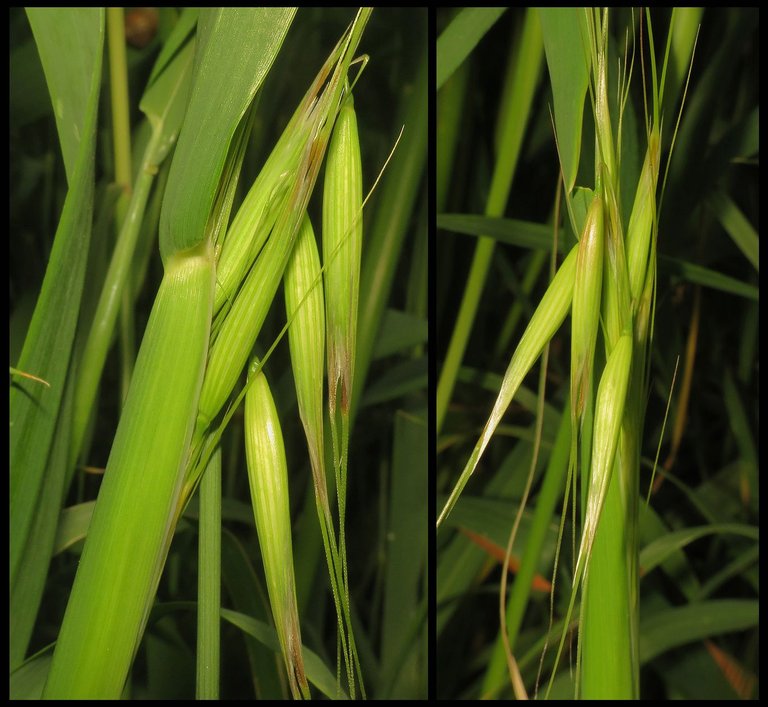

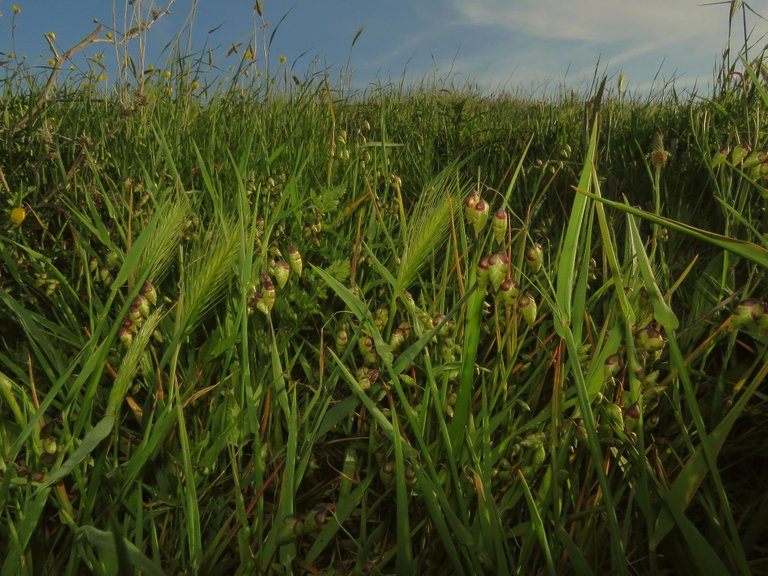
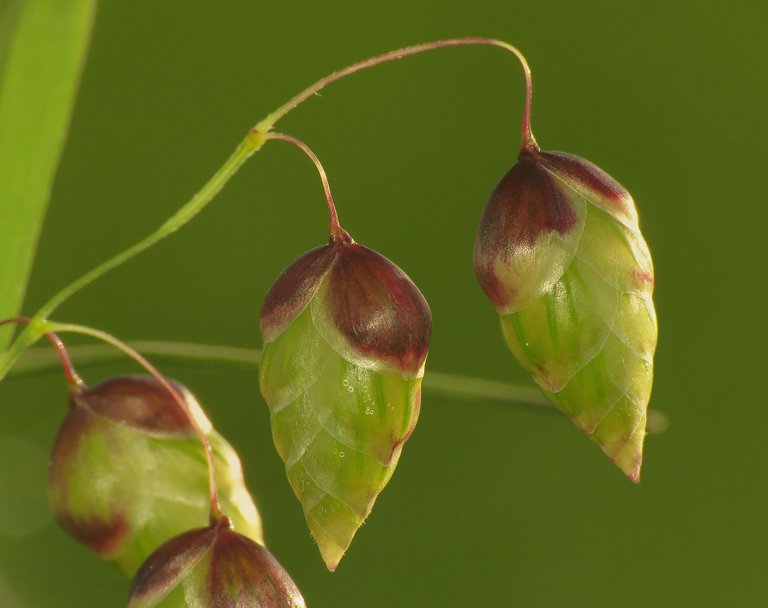
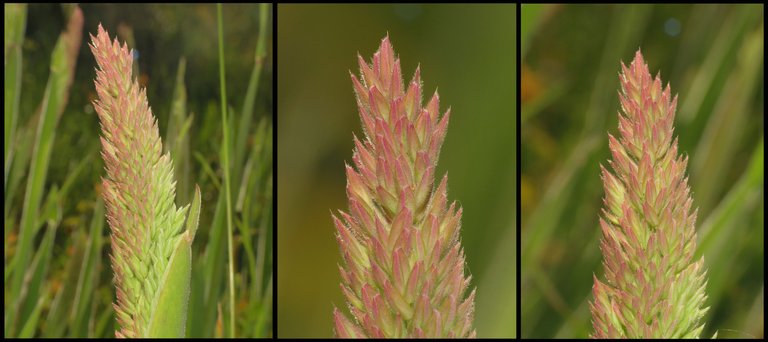

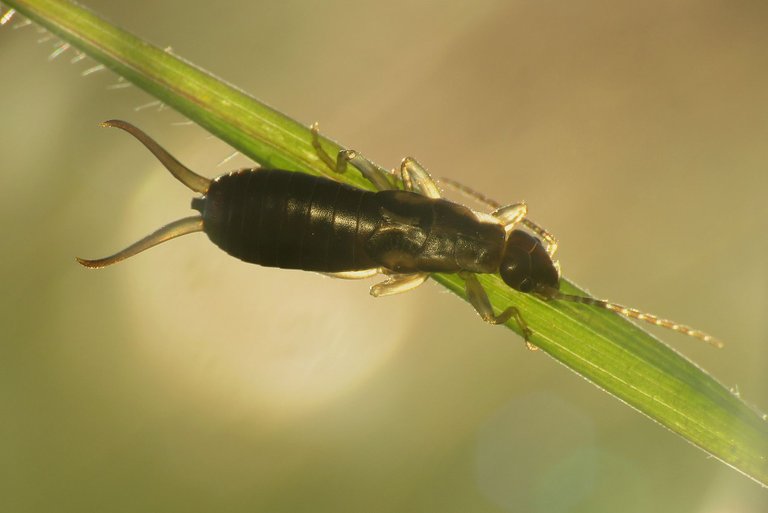

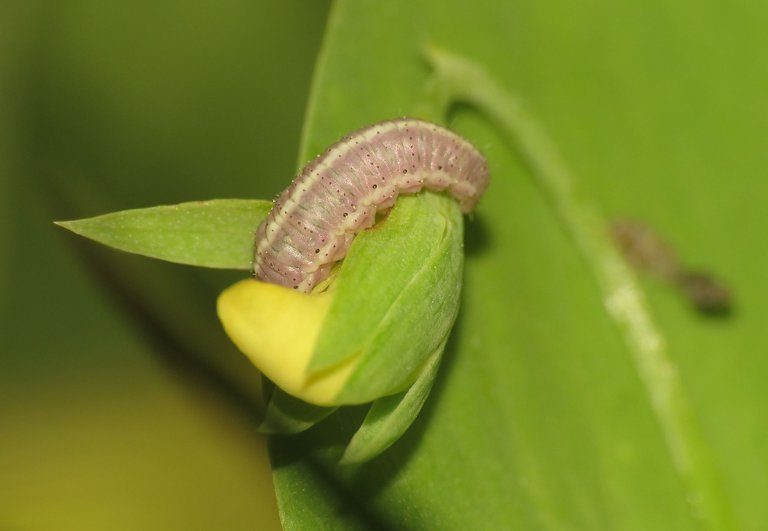

Congratulations @borjan! You have completed the following achievement on the Hive blockchain and have been rewarded with new badge(s) :
You can view your badges on your board and compare yourself to others in the Ranking
If you no longer want to receive notifications, reply to this comment with the word
STOPTo support your work, I also upvoted your post!
Check out the last post from @hivebuzz:
Support the HiveBuzz project. Vote for our proposal!
Extraordinary...but not for you. For you, just another outstanding post. The Tibellus oblongus looks sinister to me. There seems to be so much potential lethality coiled in that deceptively passive pose. I was pretty sure I'd seen that spider in my area. Sure enough, we have the tibellus in New York.
:) Yes, it looks like a sleepy little monster ... that can suddenly wake up and move ... and become scary ... and I saw on the Internet that is present throughout all Northern Hemisphere.
Wow, you did a great job of observation and investigation for this post. I enjoyed a lot reading it because I'm learning about some of my favorite creatures, I'm very interested in spiders and insects. In the first images I thought I was seeing the same species of spider, but after your clarification I looked again and I could see the differences between the two, this amazed me 😮 it is also impressive how many of these small animals can camouflage themselves so well in the middle of the grass and leaves. I realy loved the look of this little bug, the Rhopalus subrufus. Your photos are amazing! 🙌✨
Thanks. :) Glad you like this news report from the meadow in my area. Yes, insects and spiders look the best in their natural habitat, often have cool camouflage, mimicry behavior, and you can often see them in many interesting poses and situations ... walking through the grass is always a new experience, even with the same species around.
Nice. My favorites are the red markings on the grass; the nearly translucent legs of the earwig, and the aphaca plant.
Superb
Thanks :)
Interesting about the pea seeds. I liked the odd shaped leaf the pea had. The iridescent beetles were my favorites.
I'm also a big fun of various iridescent beetles ... and other iridescent stuff in nature ... like iridescent birds and their feathers ... some fishes ...
There is always so much going on in your insect posts. In this one I am reminded of the movie "Honey, I Shrunk The Kids." I feel small when looking at your photos.

Didn't see that movie for many years now ... remember being amazed by it when I saw it first time on TV.